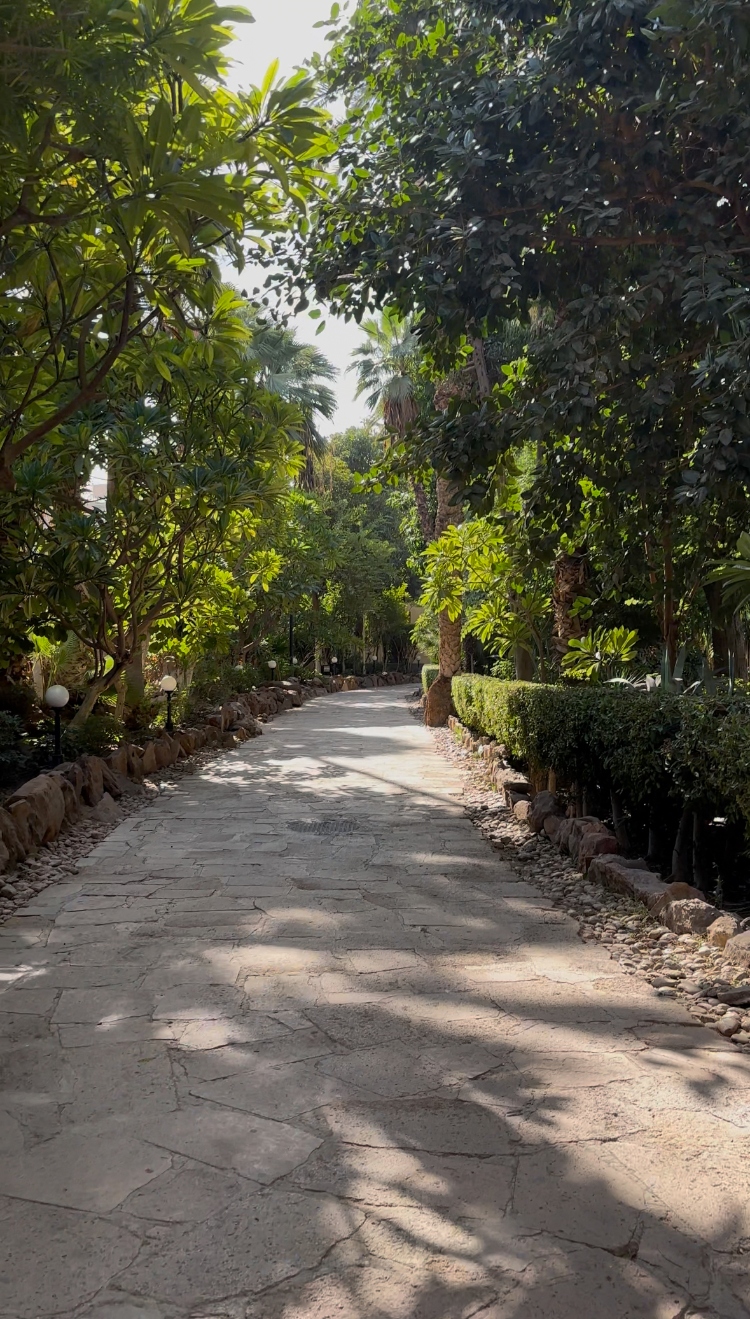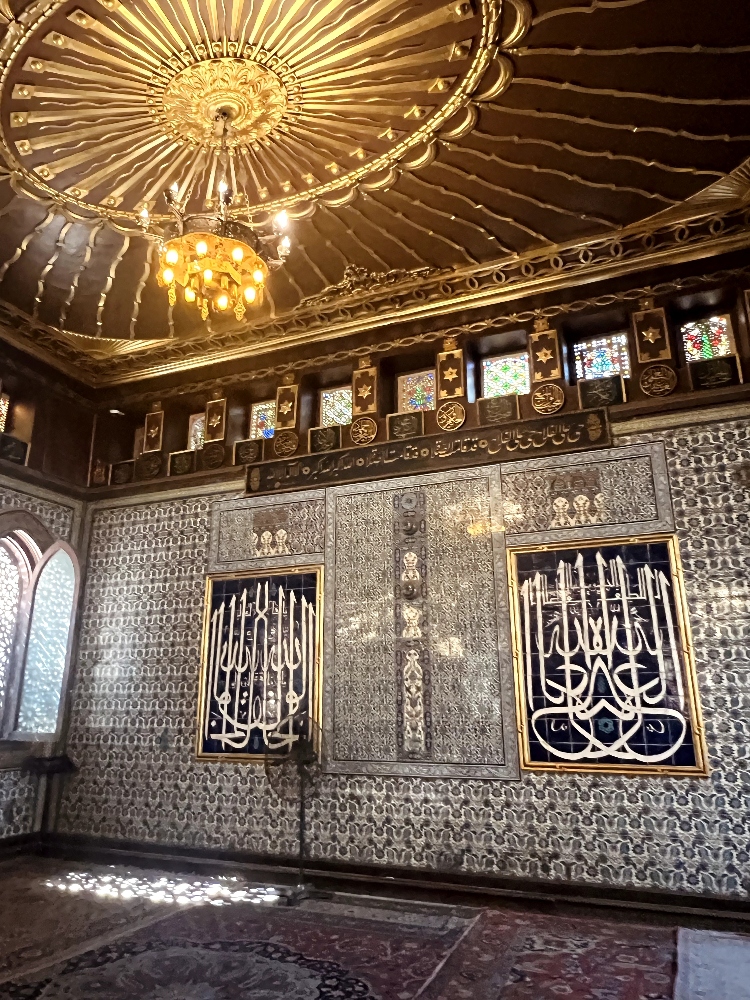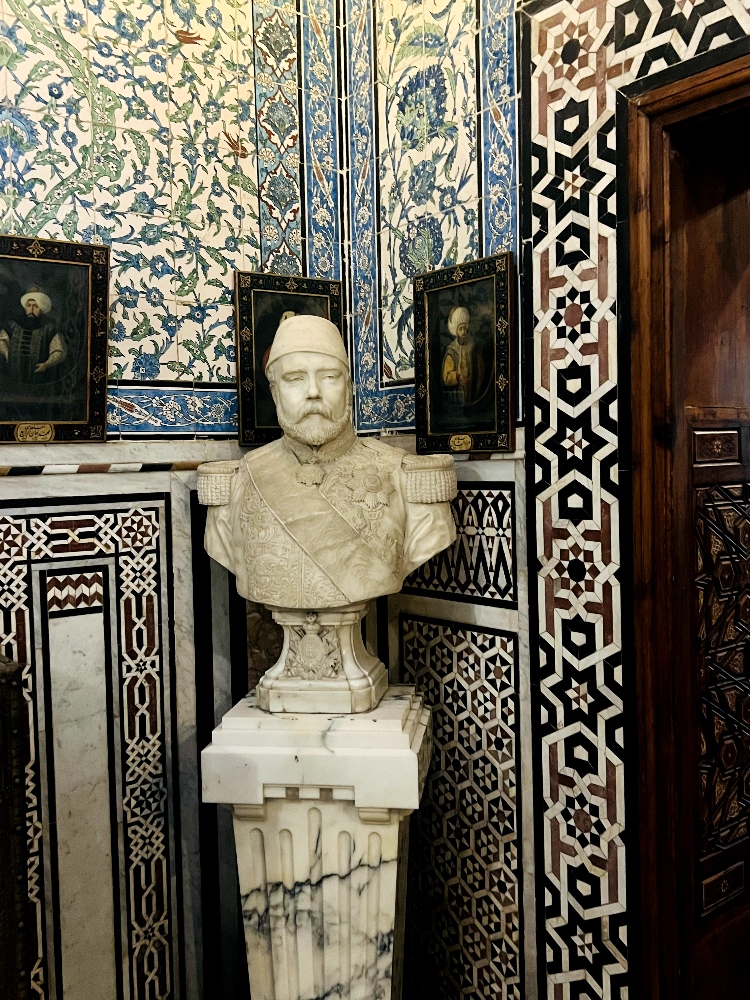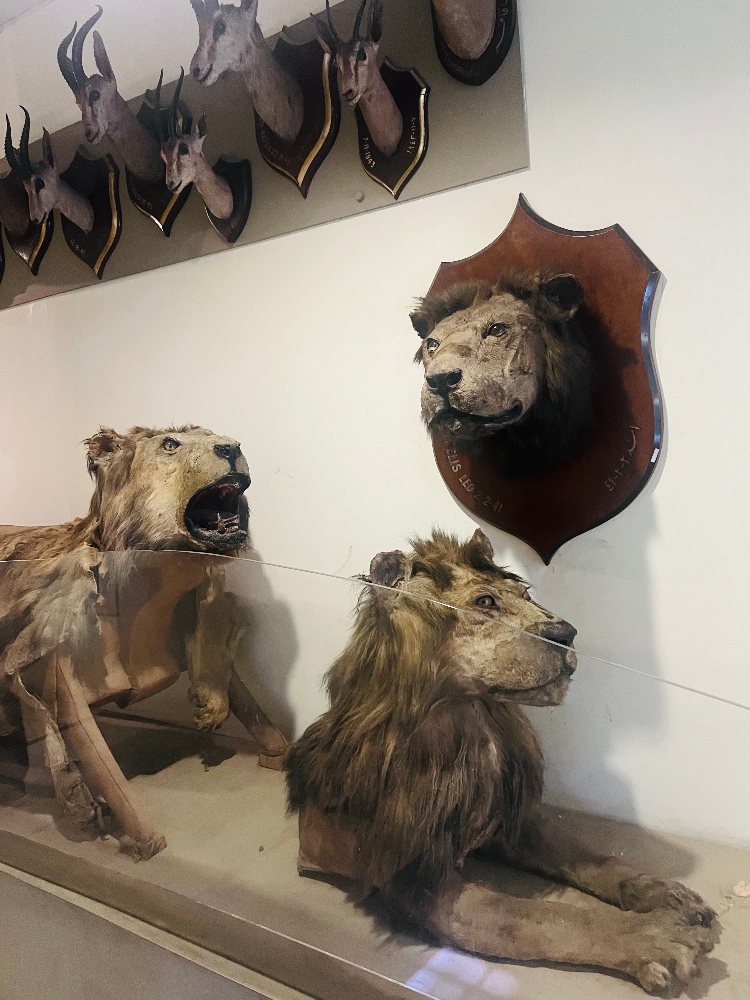The Museum of Prince Mohamed Ali’s Palace, located in Cairo’s Manial neighborhood, is a historical site that showcases the opulence and grandeur of Egypt’s royal past.
Built between 1900 and 1930, the palace features a blend of modern Islamic design with influences from Persian and Mamluk styles, as well as elements from Syrian, Moroccan, Andalusian, and Ottoman architecture even more evident in the palace’s ceilings.
Musings from a recent visit
On Thursday, 14 November, the palace was lively with children visiting the Palace as part of school trips.
Visitors can explore the palace for a fee of EGP 10 (USD 0.20) for Egyptian students, EGP 20 (USD 0.41) for non-students, and EGP 220 (USD 4.46) for foreign tourists. Also, note that payment is accepted only by credit or debit card; alongside various historical sites that now accept card-only payment, the Palace is no exception.
Fatma, an elderly cleaning lady at the palace, mentioned that the palace often welcomes young students to help them learn more about its history .
On the outside, the palace is surrounded by lush greenery that enhances its serene atmosphere, making it a charming and historic setting where visitors can take pictures, basking in the beautiful surroundings.

On the inside, the palace is thoughtfully divided into several key areas, each rich in history and artistry including reception halls, a clock tower, a mosque, a hunting museum.
Saray of the Throne
At the grand of the grand hall is a throne, featuring a striking golden sunburst on the ceiling. A large painting of Muhammad Ali Pasha, the founder of the Alawiyya dynasty, hangs prominently, surrounded by gilded furniture and portraits of ruling family members.

Alternatively, the upper level of the museum includes the elegant Aubusson Room, decorated with prized French tapestries, a salon with colorful Islamic tiles, and a hall that contains a four-poster bed once belonging to Amina Ilhamy, Prince Mohamed Ali’s mother.

Mosque and Clock Tower
The mosque’s exterior, located near the exit, showcases delicate decorative patterns and Arabic calligraphy, along with an elegantly designed entrance. Inside, it is divided into two sections, featuring a minbar and mihrab, dotted with lovely ceramic tiles.
The mosque, which is inside the palace, is open for Friday prayers for both men and women, with no ticket fee.

Adjacent to the mosque stands the clock tower, styled after the famous minaret of Hassan Mosque in Morocco, showcasing floral motifs and intricate Arabic calligraphy.

Residence Saray
One of the oldest parts of the palace, the Residence Saray, was built in 1903 and includes a basement and two floors. Visitors enter through a foyer with a central fountain, which leads to several rooms, including the Dining Room, Shell Salon, and Mirrors Hall.
There is also the Reception Saray, which used to host official ceremonies and include a room for distinguished visitors before Friday prayers. The upper floor features the Moroccan Hall, known for its unique decorations and the usage of colorful windows, and the Syrian Hall, with delightfully carved wooden walls inspired by Ottoman design.

The Hunting Museum
The Hunting Museum showcases fascinating exhibits related to hunting, including mummified lobsters, crocodiles, cobras, and elephants. It also displays mummified lions, decayed horses, and turtles, all reflecting the interests and activities of Prince Mohamed Ali.
Prince Mohamed Ali was a fanatic for birds and had a wide array of mummified bird collections from butterflies to eagles, chicken and peacocks. Decayed camels were also part of the exhibition, and they were featured many times within the museum.

Aesthetic Values in Interior Design
The palace’s interior design reflects carefully curated design elements, from geometric Islamic inspirations to vibrant stained glass, enhancing the overall beauty and purpose of each room. This harmonious blend of artistry and practicality not only preserves the palace’s heritage but also enriches the visitor experience, highlighting the significance of cultural and aesthetic appreciation in interior spaces.
Cultural Significance
The museum serves as an important cultural hub, showcasing the artistic and architectural achievements of Egypt’s royal history. By preserving and displaying these elements, the palace fosters a greater understanding of Egypt’s diverse cultural heritage. Visitors gain insight into the historical context of the designs, enhancing their appreciation for the craftsmanship and artistry of the time.
Finally, with its stunning architecture and rich collection of artifacts, the Museum of Prince Mohamed Ali’s Palace invites visitors to delve into the history of modern Egypt, making it a must-visit destination in Cairo.


